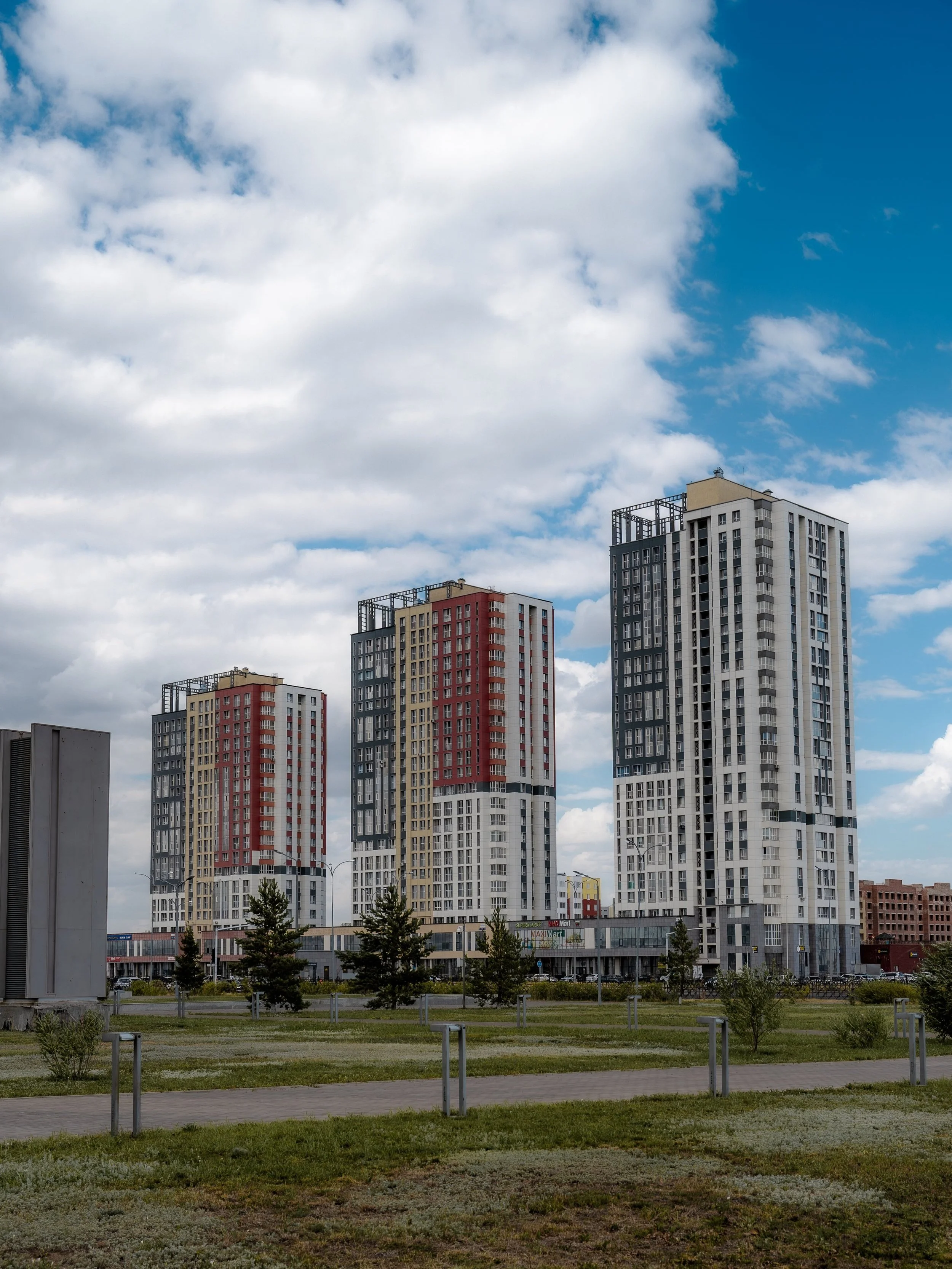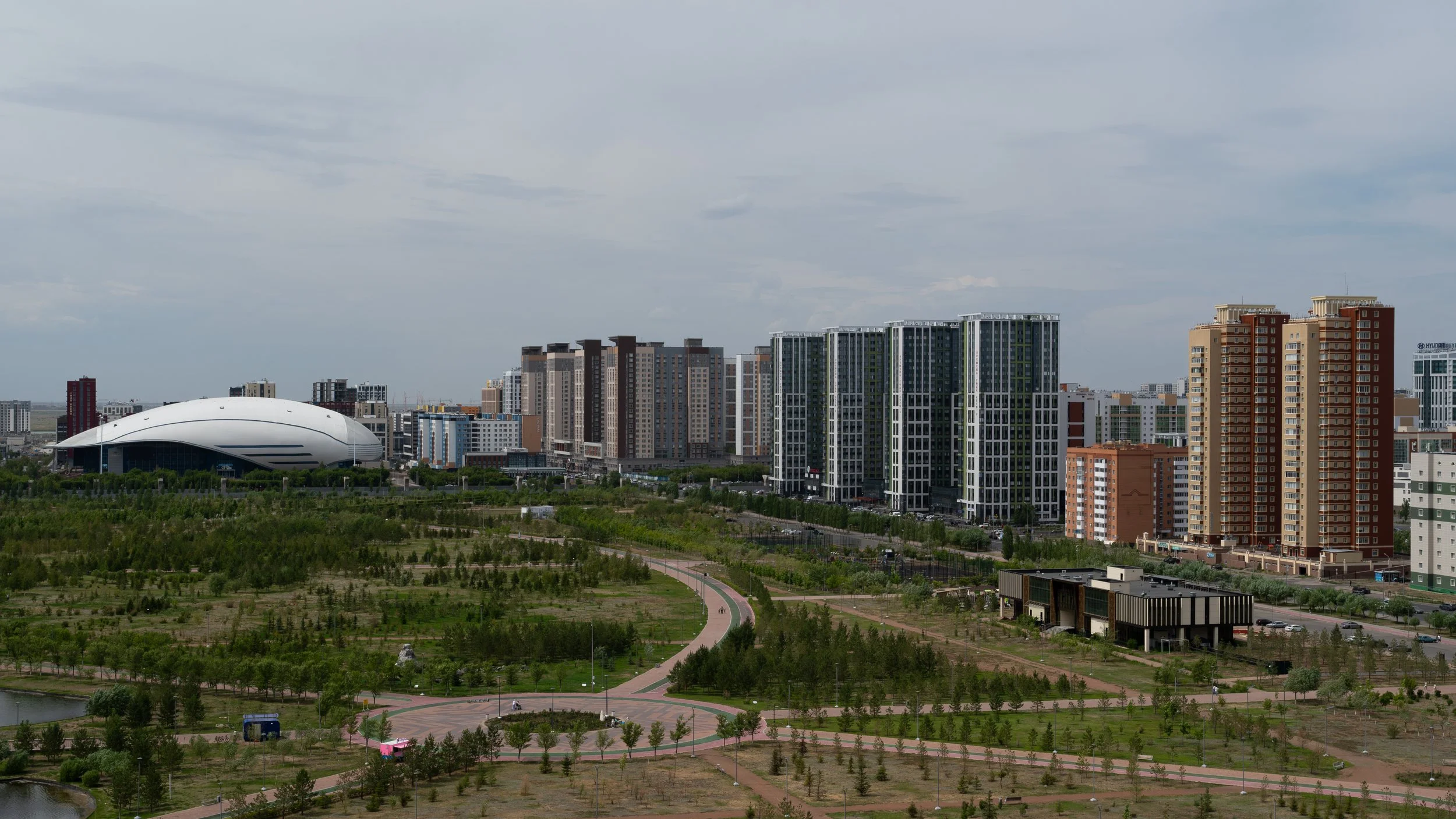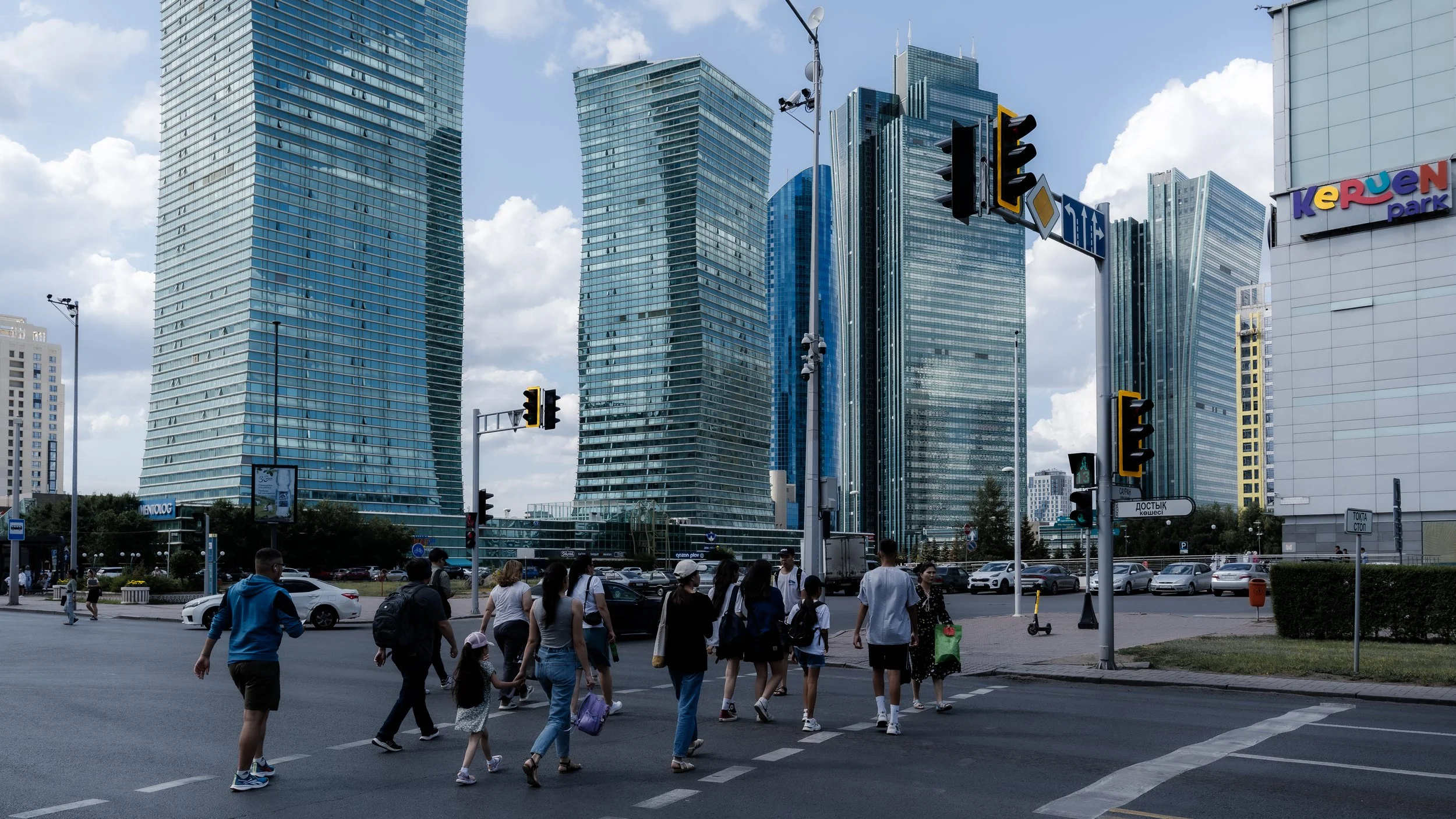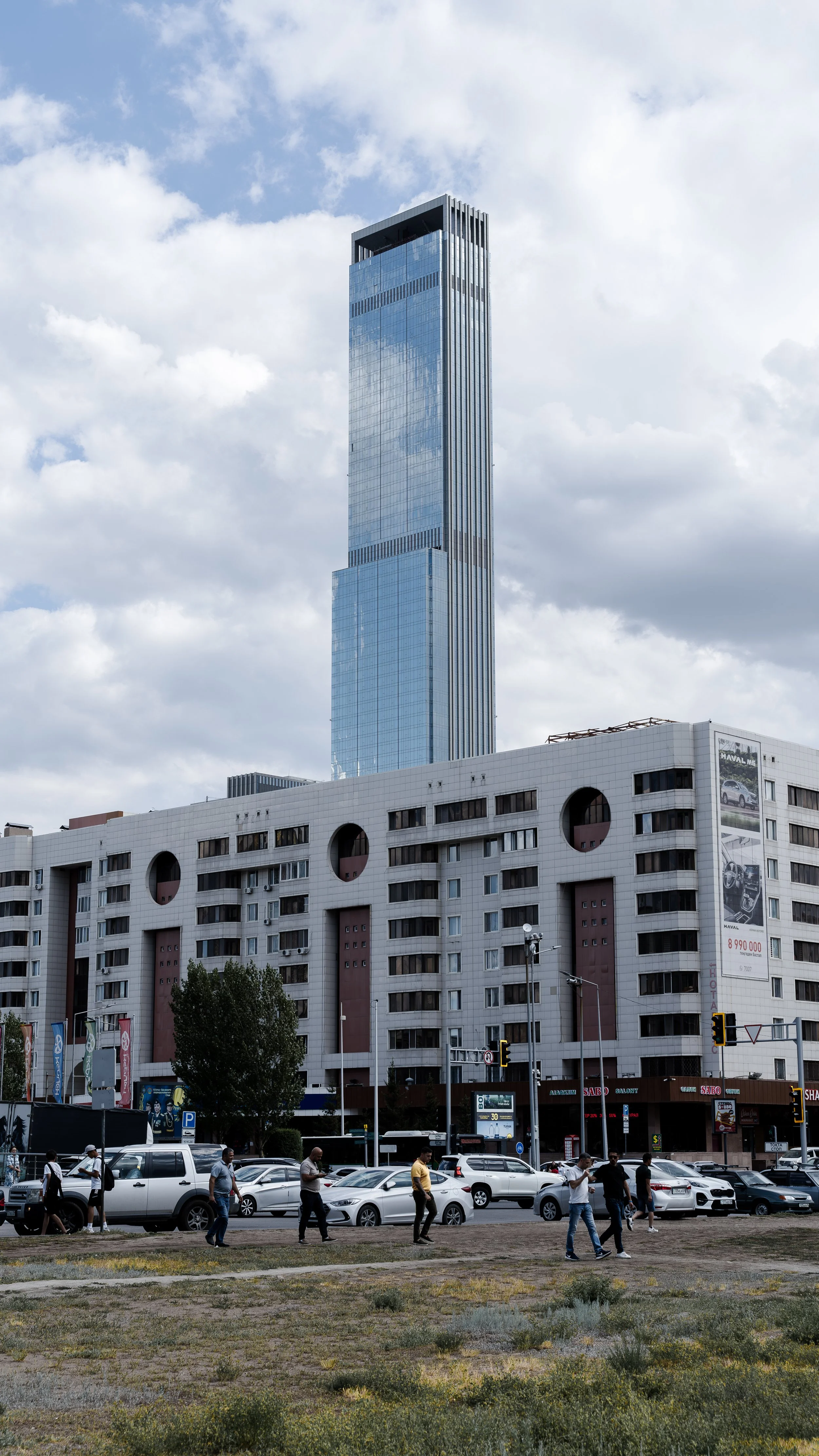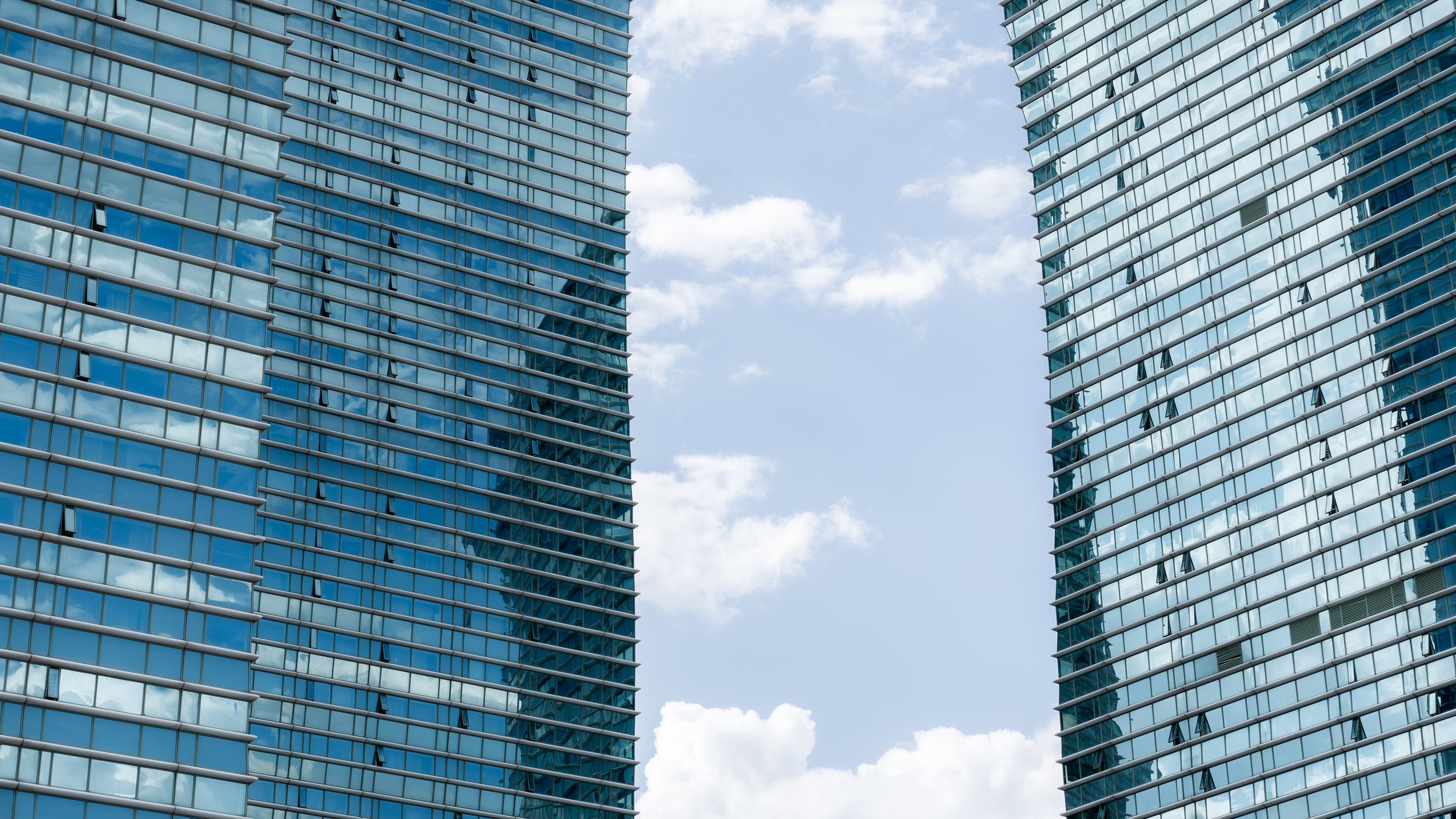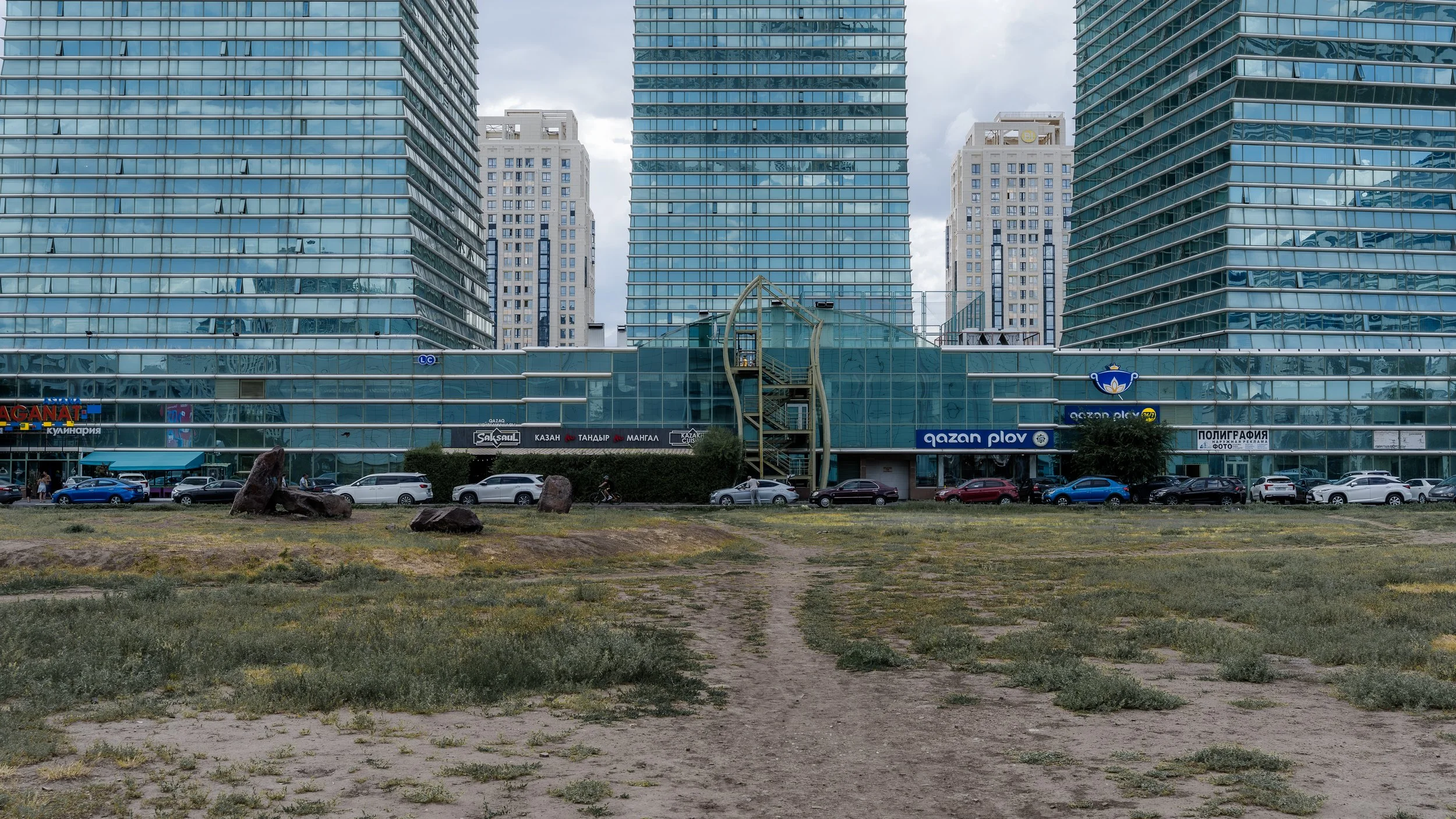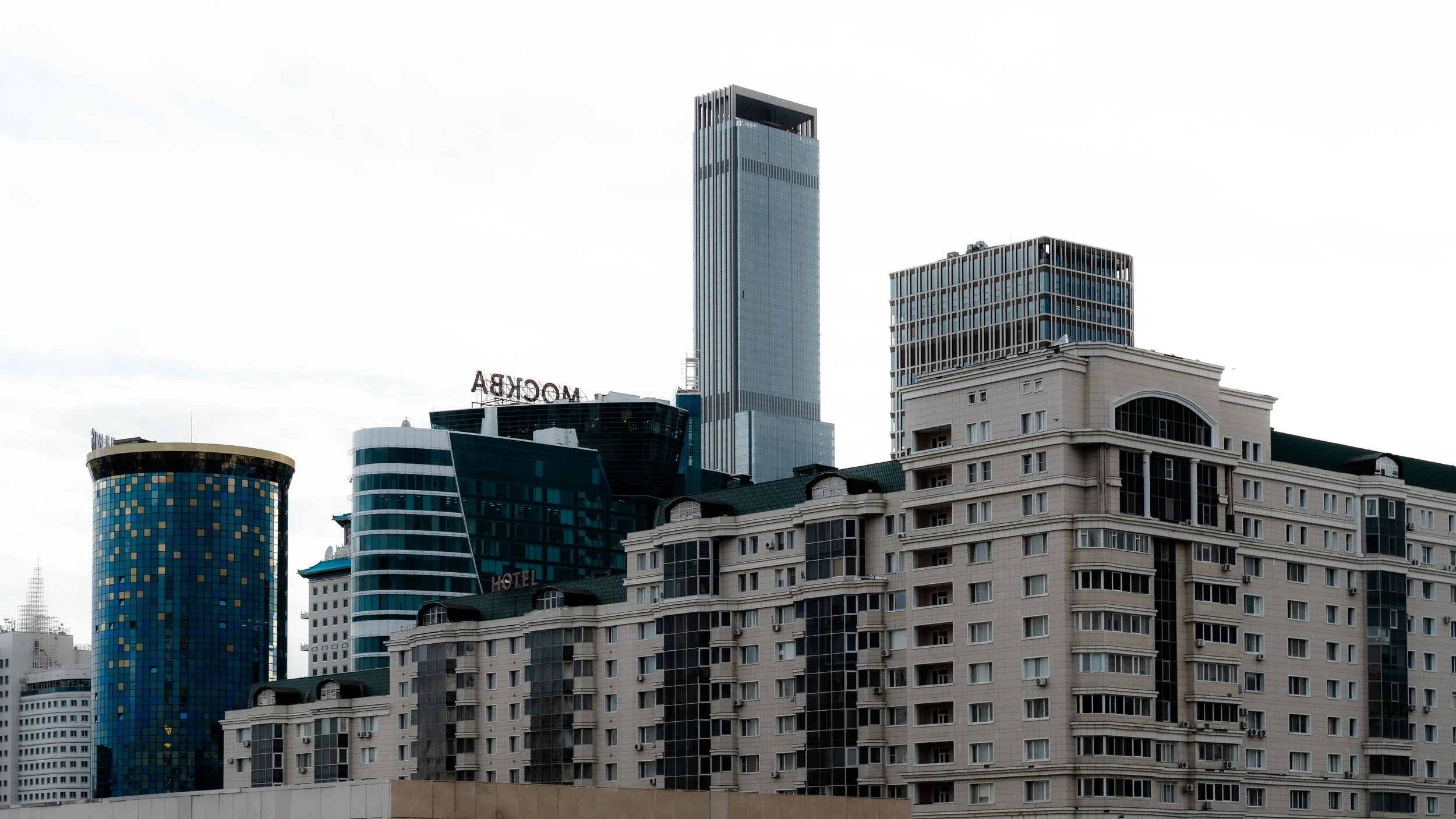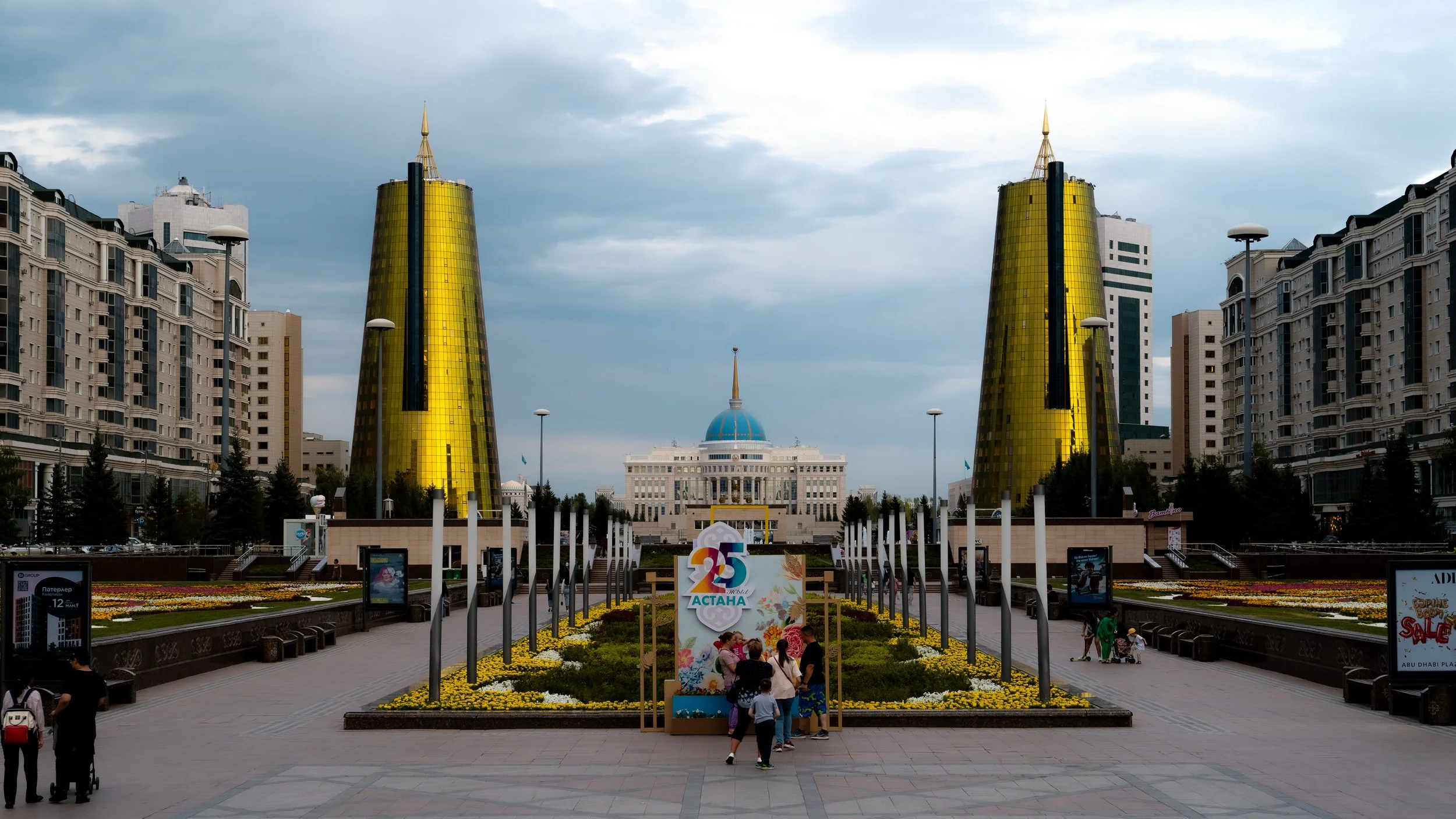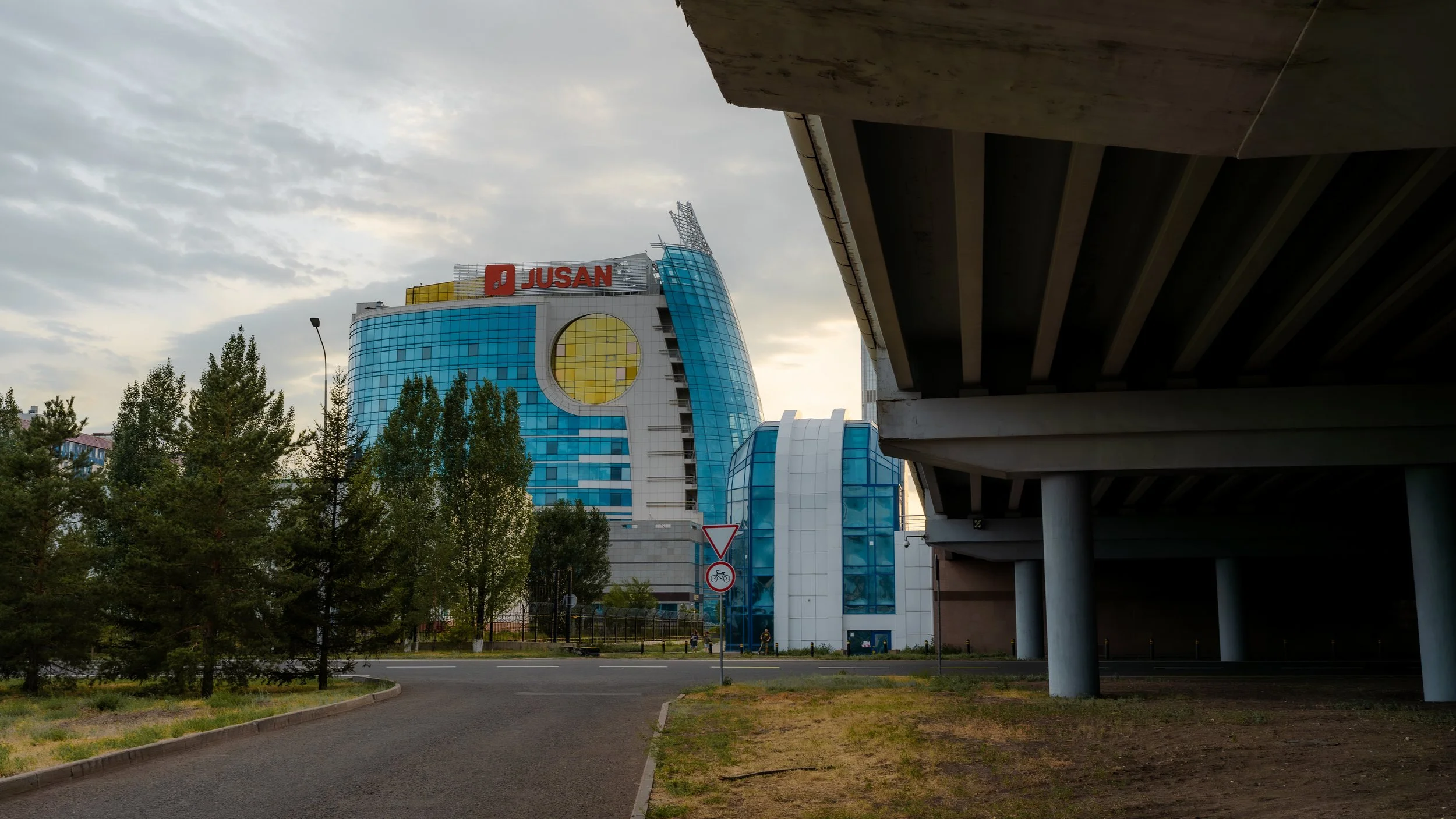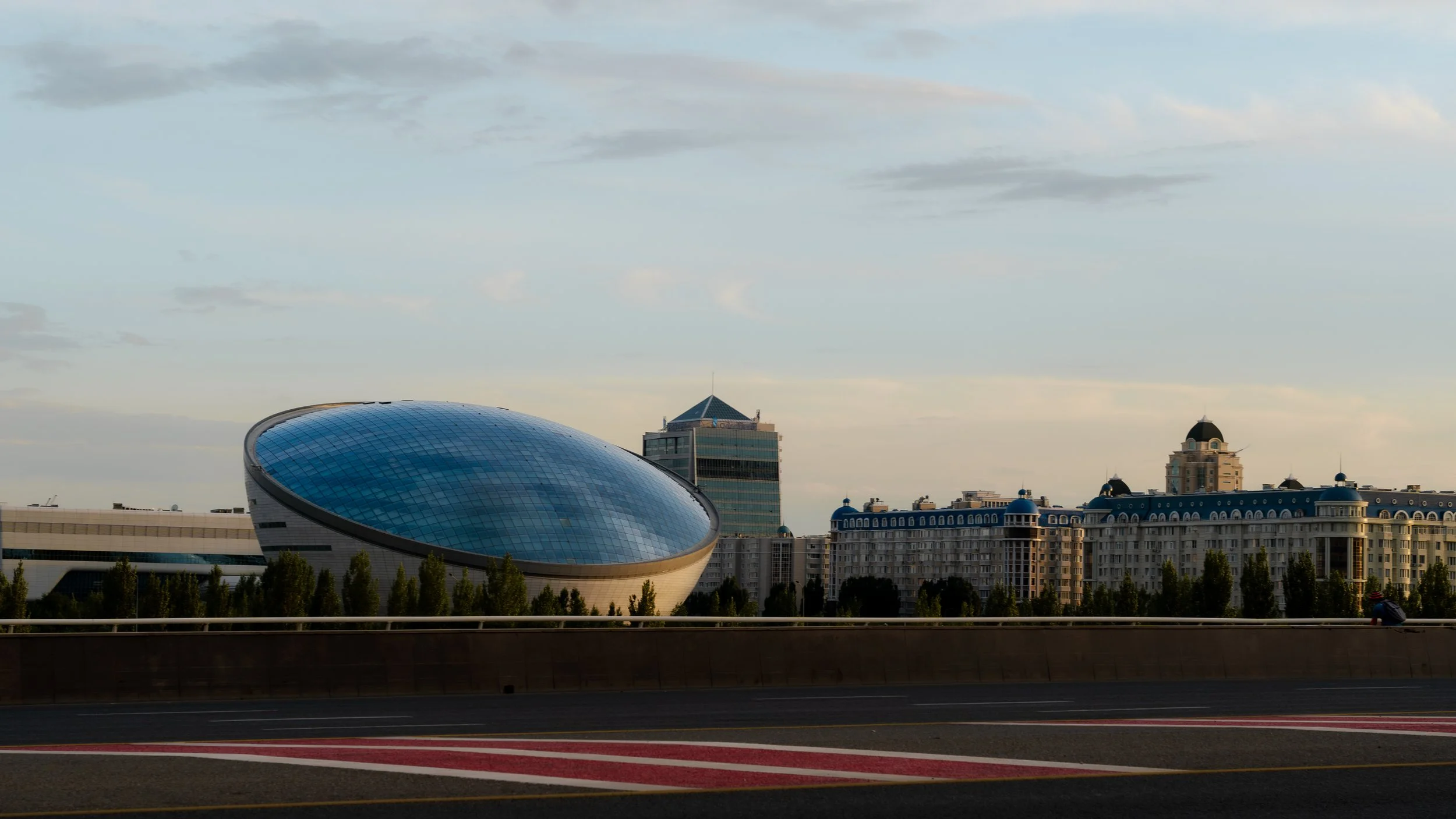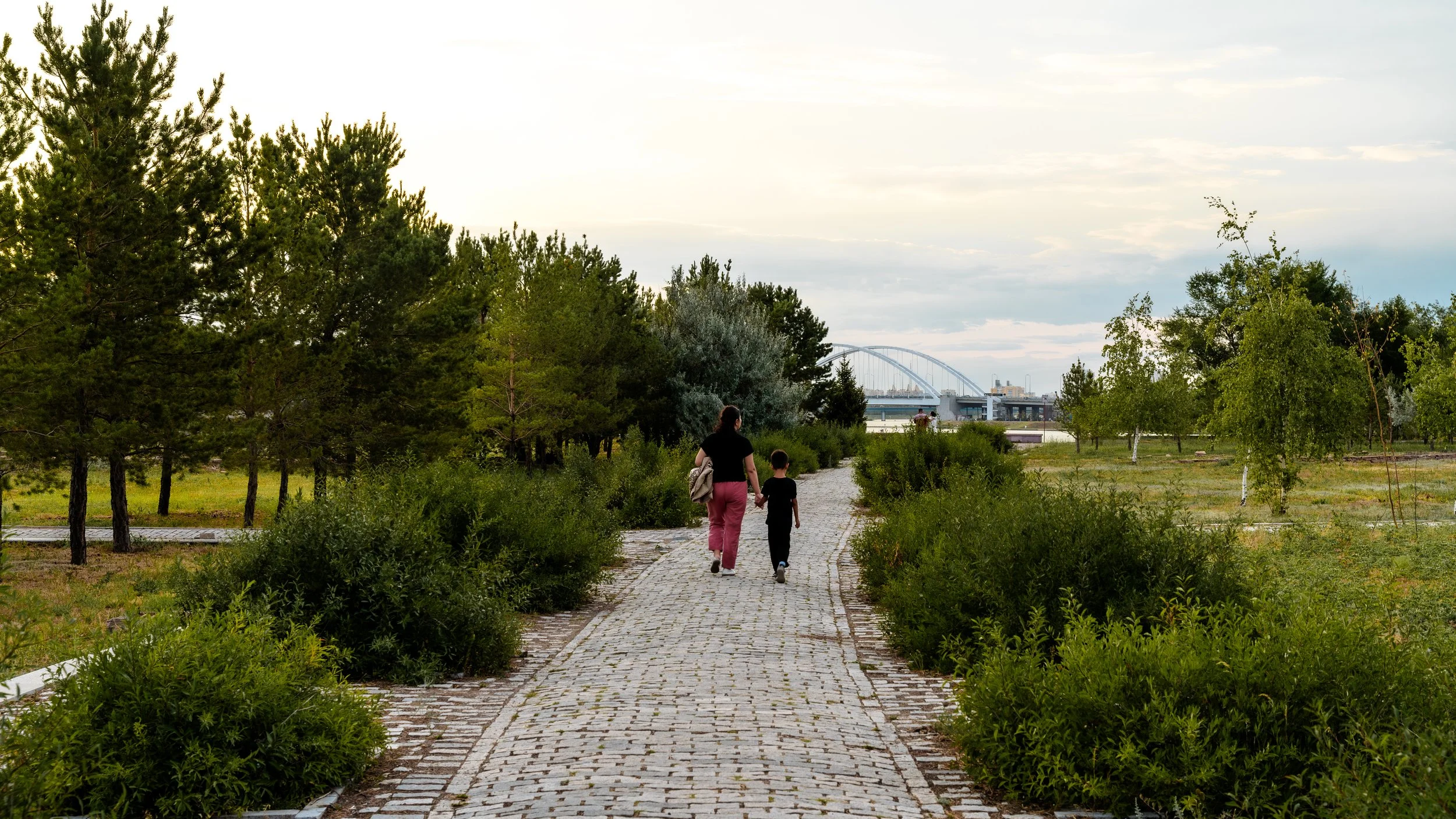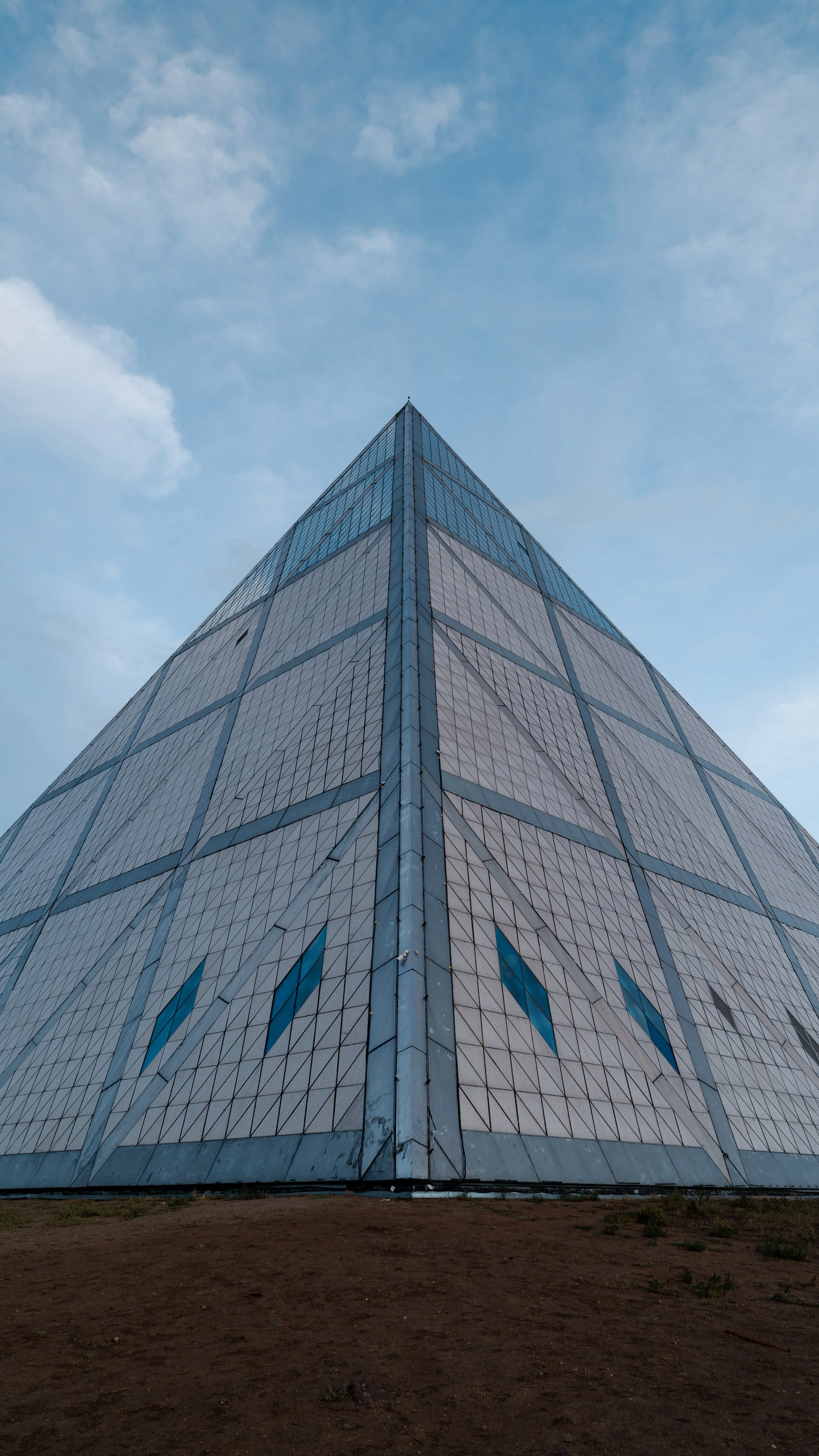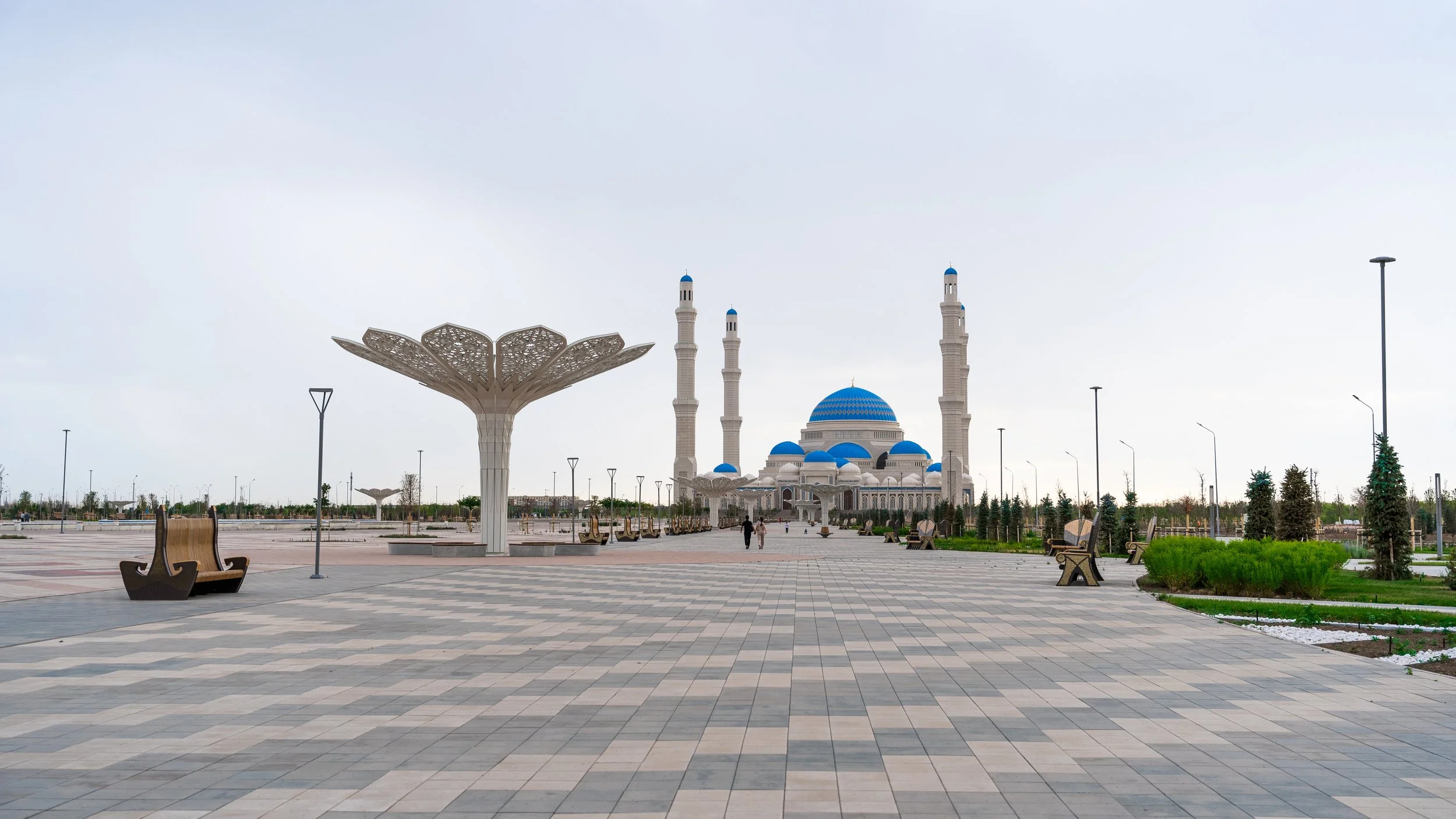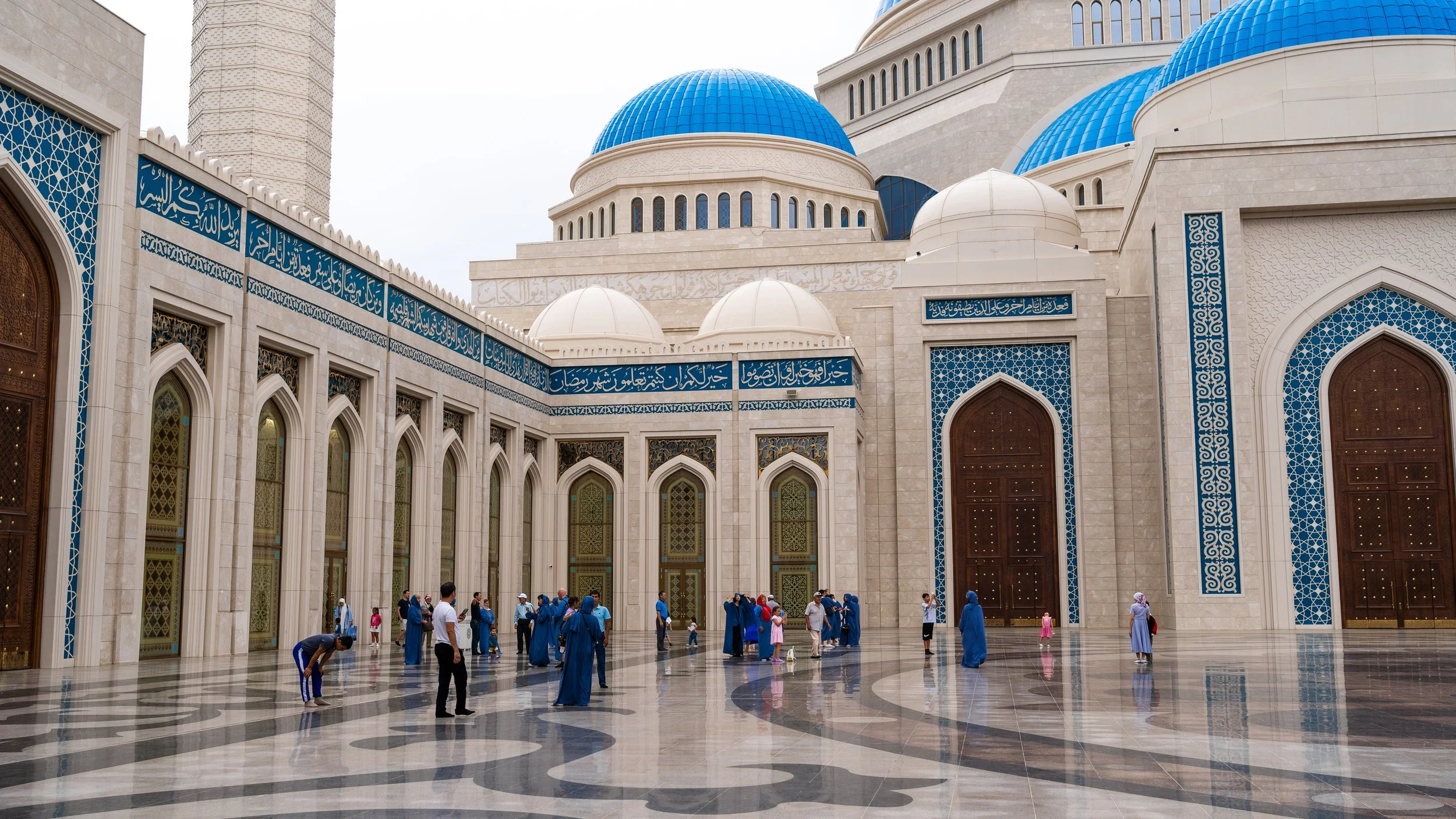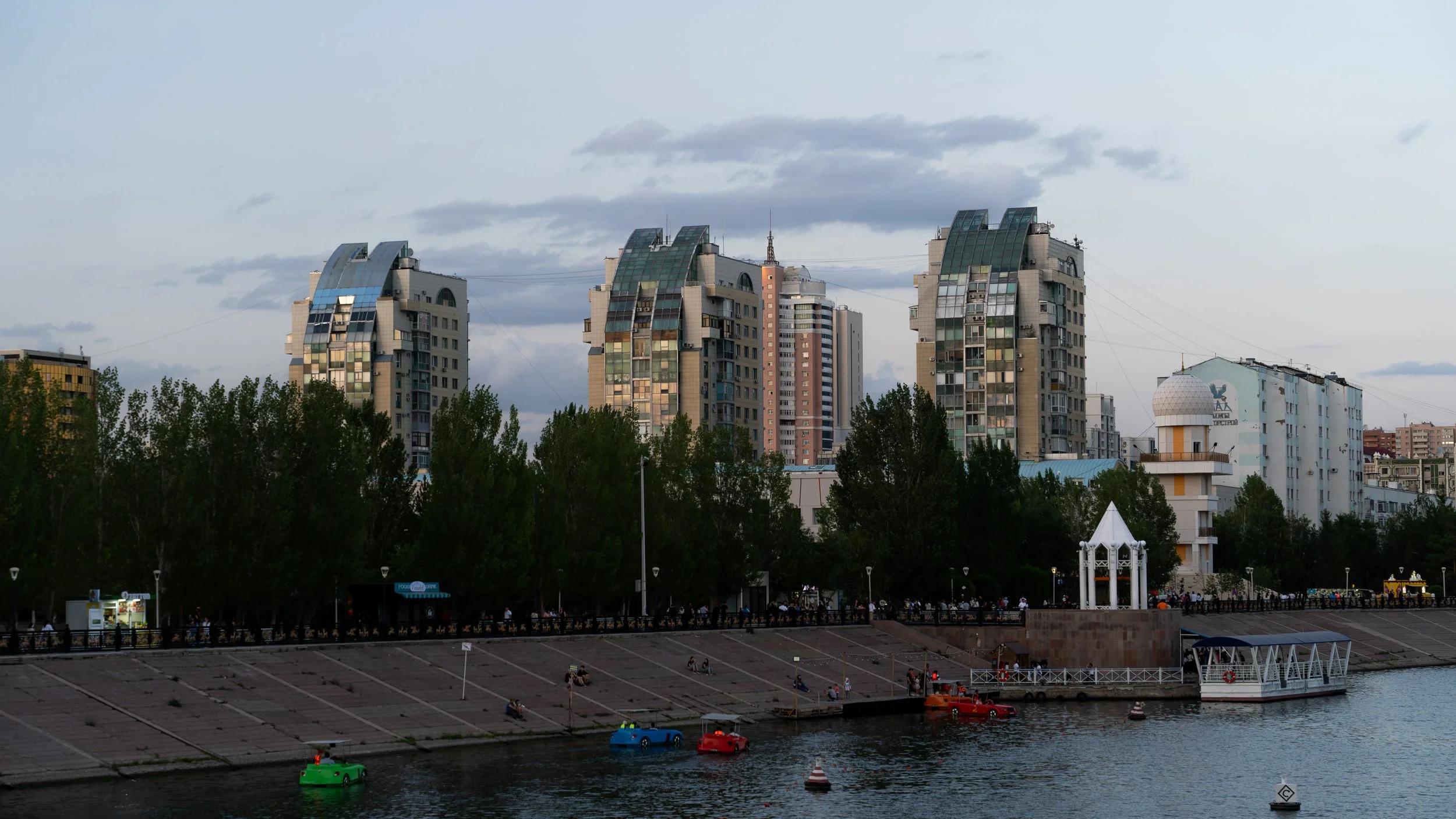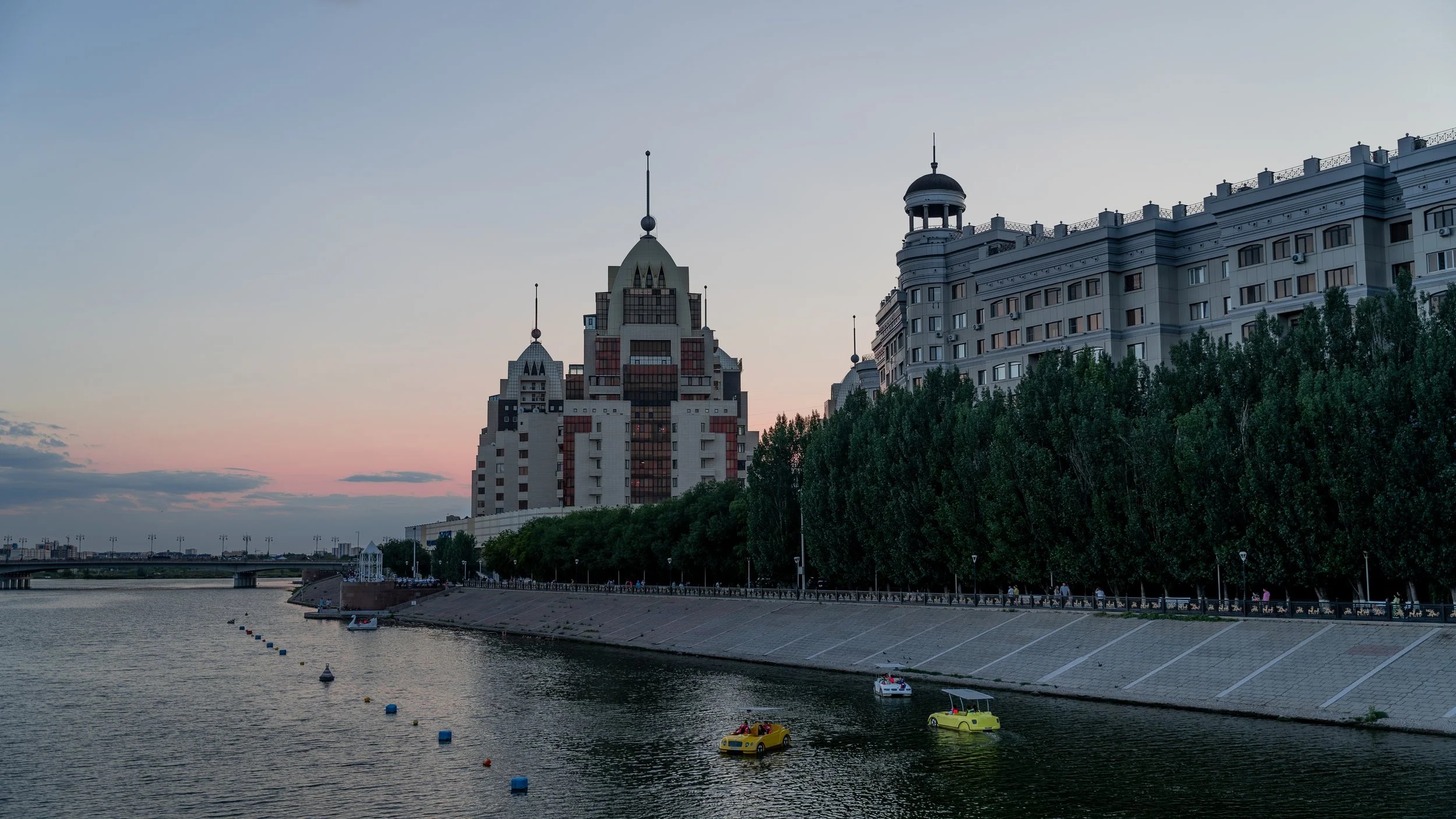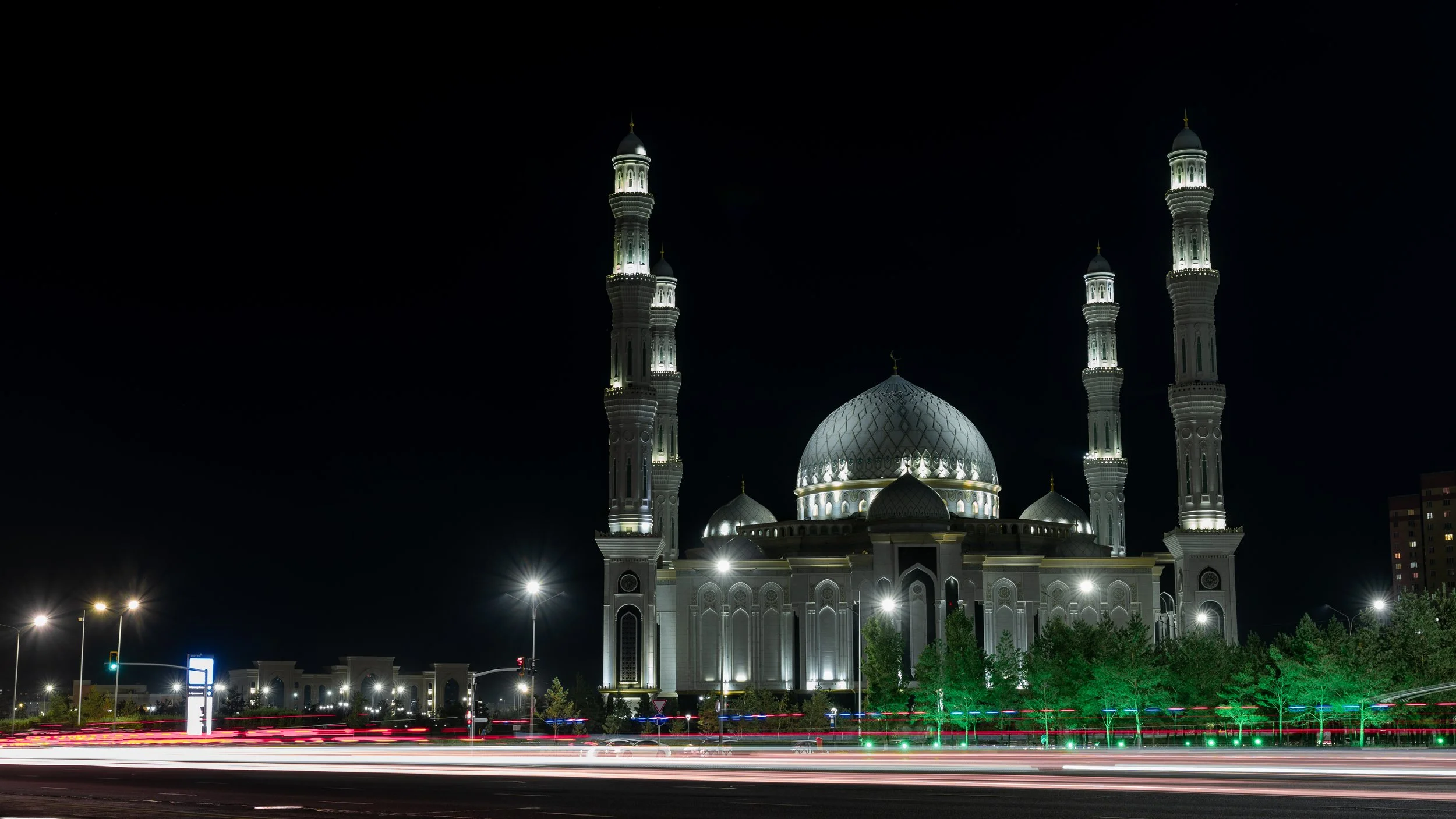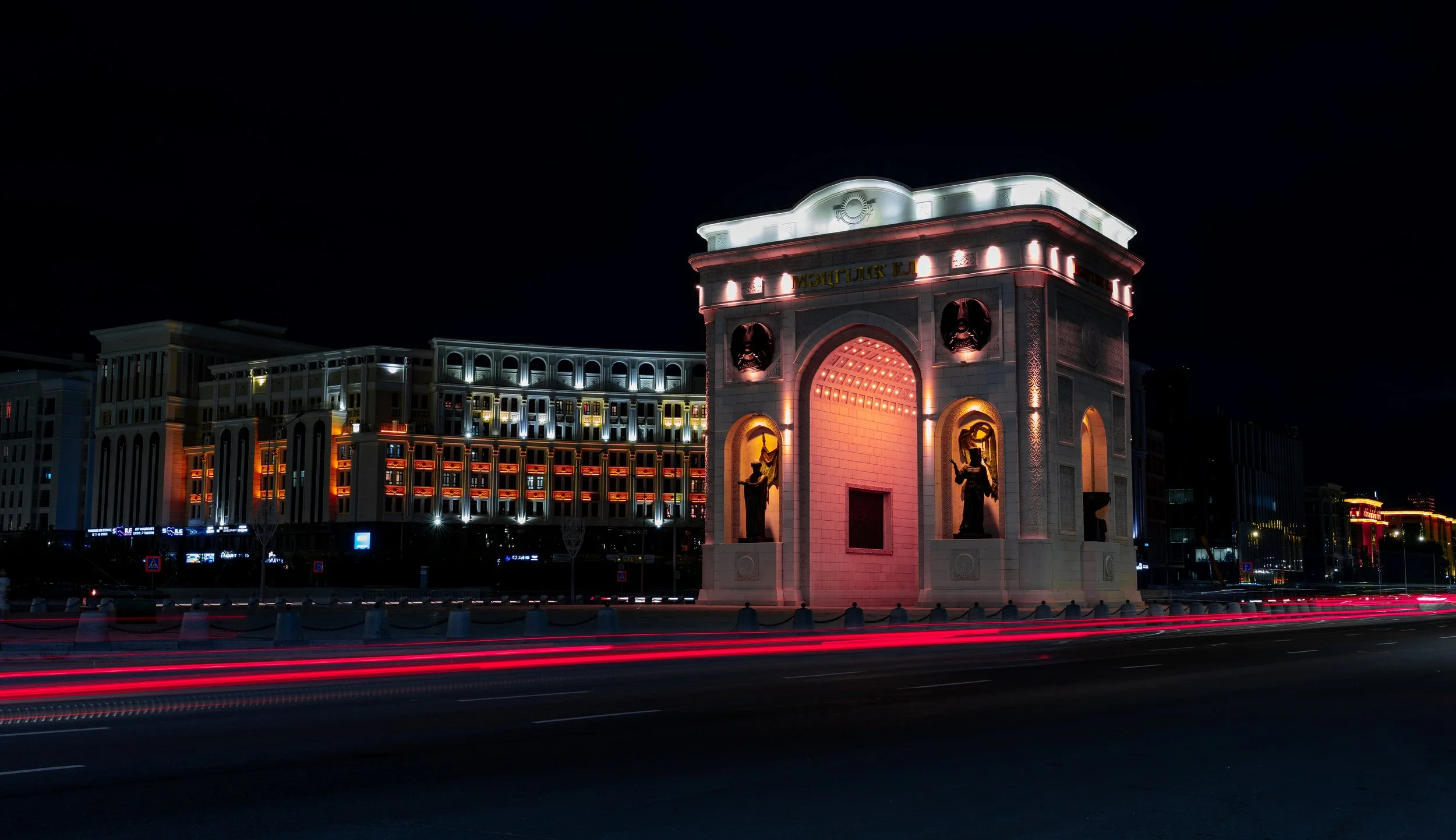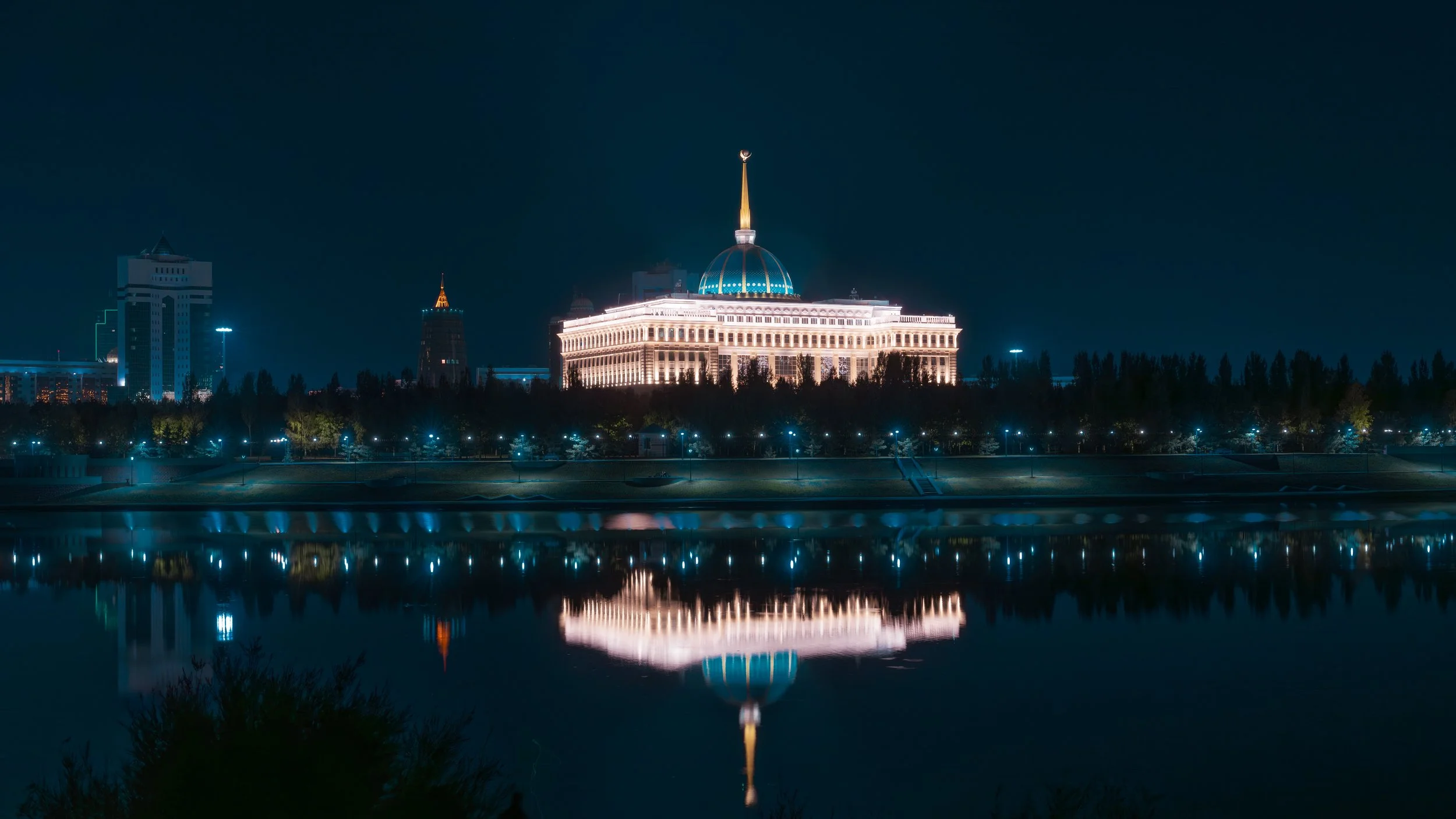The Future
This is the third post in a four-part series covering my railroad journey between Almaty and Astana.
The Talgo - Балхаш - The Future - 15 hours in Aktogay
Symbolism is often integrated into the urban layout and architectural theme of capital cities around the world. Capital cities attempt to represent the whole of the nation, its accomplishments, characteristics, ethnicities, and governance methods. Broad avenues named after national heroes and leaders connect government buildings and museums. Think of places like Washington, D.C., USA, or Brasilia, Brazil. For instance, the U.S. Capitol building and the White House are connected by Pennsylvania Avenue, creating an unobstructed view between the two. I believe the designer, Pierre L’Enfant, intended to symbolize the transparency or accountability between the executive and legislative branches. Each branch is always in sight of the other. Brazil’s capital also houses many government institutions around a national mall with a framework of wide avenues that create the shape of a bird when viewed from a map.
A significant portion of land is required for a government to achieve its pen-and-paper plan. For example, The New Administrative Capital in Egypt is being developed adjacent to the current overcrowded capital of Cairo. This ambitious development requires billions of dollars to move the government into the nearby desert. The move is seen by many as a way to protect the Egyptian military, parliamentary, and executive branches from revolution. Removing these institutions out of congested Cairo will reduce the success rate of an angry mob attempting to storm government offices. Of course, the government claims that the move will decrease pollution and congestion within Cairo, which is factual. Regardless, the relocation is symbolic in itself. What does this also say about the relationship between the government and its people?
Nations also designate or redesignate existing cities as their capital. Kazakhstan’s capital, Astana, is built upon an existing town founded in the nineteenth century. It was once a military outpost during the Russian Empire and then served as an agricultural center under the Kazakh SSR. After gaining independence from the USSR in the nineties the government decided to move the capital from Almaty to Astana.
The newly independent Kazakh government understood the importance of ensuring the longevity of its sovereignty and territorial integrity early on. However, the country consisted of many ethnicities. Kazakhs were surprisingly the minority in their country. The government also worried about those in the northern administrative regions who may have felt aligned with their Russian neighbor to the north. This is perhaps the most important reason for moving the capital to the north. Other reasons include Almaty’s proximity to a rapidly growing China and the fear of the Tian Shian mountain range coming to life on the Richter scale.
Since 1997, Astana has become a prime example of growth and development in the post soviet world. The city represents the unity of the Kazakh people and their emergence as a sovereign country moving into the twenty-first century. Astana will continue to grow as an attractive hub for foreign investment, trade, and tourism. Let’s explore!
My source here:
Google satellite images between 1984-2022
The river Ishim divides Astana into two distinctive halves. The north remains architecturally Soviet while a new capital emerges in the south. Symbolic structures and modern apartment buildings line the wide traffic-jammed avenues. I center my photography in the southern district to show you the planned city of the future. Much is expected of Astana in the future. The government set rigorous development goals that will place the country in the most innovative and developed category of countries by 2050. Astana is, therefore, taking this stance ahead of most cities in the country and arguably over all others in Central Asia.
“Smart City” is a concept often used in Astana’s development goals. A smart city uses technological innovation and big data gathering to increase the efficiency of an urban environment. This includes implementing street lamps that light up only when a vehicle passes and designing safer playgrounds for kids. The list of innovative solutions certainly does not stop there. Improving waste management and generating electricity with an alternative other than fossil fuels keeps the country’s IT, engineering, and scientific communities busy. A widely debated innovation involves the implementation of Chinese-manufactured cameras on every street corner to monitor traffic and pedestrian patterns. What do you think about this?
Learn more here:
Expo 2017 Astana
In 2010, Astana was awarded the privilege of hosting the World Exposition. The theme for the year focused on the future of energy. Many of the nation’s smart goals, energy-saving strategies, and innovations, including those from other countries are contained in this large sphere. The surrounding campus also includes the Mega Silk Way Mall, Hilton Hotel, and office space for IT companies.
Expo Union in development
Nur-Sultan-Nurley Zhol Train Station
Like many infrastructure projects throughout the country, the train station is also named after Kazakhstan’s first president, Nursultan Nazarbayev. He was in power from 1991-2019.
A typical mixed use development
I was told that Astana felt empty. How could a city with over a million people feel empty? Astana is just too spread out. Residents must rely on their cars or public transportation to get around. Walking to most places is still achievable. However, it is incredibly inconvenient in some areas where cloverleaf interchanges or wide avenues discourage walking.
The parks are certainly peaceful to walk around in. However, there aren’t enough people to fill them at all hours of the day. Below is a view of the Botanical Garden from my hotel room. Do you see any people?
Saryarqa Republican Cycle Track in the distance. The arena resembles a bike helmet.
A local gym located inside the park
Empty plots of land are left undeveloped near highrise apartments. This is common in Astana, especially near the gated suburbs on the periphery. I think the time window for starting and completing projects is small due to Astana’s extreme winters. This is the second coldest capital in the world after Ulaanbaatar, Mongolia. Temperatures reach around -30 degrees celsius here.
Northern Lights Towers (left), Emerald Towers (right)
Abu Dhabi Plaza Tower
This is the tallest building in Central Asia standing at 320 meters. Designed by HKR Architects and completed in 2021.
Empty plot of land centered in the heart of Astana.
KazMunayGas Headquarters
Khan Shatyr Entertainment Center
Designed by Foster and Partners in the mid-2000s. The inside contains a food court, retail stores, and even a sky beach club.
Baiterek
The Baiterek is at the center of the new capital. This 105m tall observation tower is a national symbol of independence. It is designed to resemble a poplar tree and was completed in 2002.
The egg shaped structure is the National Archives. Northern Lights Towers in the background.
Baiterek park typically stays busy since it is the main tourist attraction in the city. The Ministry of Foreign Affairs and the Ministry of Defense act as book ends to the north and south sides of the park.
The Golden Towers and the Ak Orda Presidential Palace. Completed in 2004.
I had just entered the heart of the Kazakh Government. Police armed with automatic weapons positioned themselves on every corner. Again, I felt like the only tourist walking around, especially with a large camera. A police officer stopped me and asked if he could search my camera. I showed him my images of the Baiterek and asked him what I was forbidden to photograph. He pointed in the direction of the Presidential Palace. I gave him an enthusiastic reply of compliance and continued walking towards the palace. Sure enough, I saw another tourist photographing the palace with his phone. A police officer stood next to the tourist and didn’t seem to care that he was taking photos. I ended up having a short conversation with the officer explaining a few characteristics of our nationalities.
Ukimet Uyi Government House (left), Parliament building (right)
Kazakhstan Central Concert Hall. Designed by the late Italian Architect, Manfredi Nicoletti. Constructed in 2009.
Jusan Bank Building
The Nazarbayev Center is a multifunctional library designed to look like an eye. Designed by Norman Foster and completed in 2012.
The construction of a monorail transit system is underway after years of stagnation.
Presidential Park
The most unique skyline I’ve ever seen. What do you think?
Hazrat Sultan Mosque and the National Museum of the Republic of Kazakhstan
The Palace of Peace and Reconciliation
Designed by Foster + Partners and completed in 2006
Independence Square
The Grand Mosque of Astana
This is the largest Mosque in Central Asia and accommodates over 30,000 people. My photographs do not represent the sheer size of this 57,000 sqm Mosque.
I began to feel a sense of loneliness after my seventh day in Astana. I never made any new friends like in Balkhash and started to feel like an NPC wandering around a city filled with magnificent architecture. I was looking in the wrong place the whole time. The riverwalk near Astana Central Park is the city's most active and soul-filled part. I found people walking around and enjoying themselves with friends and family. The mood finally felt fast-paced and alive. Restaurants, music, and arcade games entertained the evening crowd. I wish I had taken better photographs of the riverwalk. Part of this journey across the country challenged my confidence in taking photos of crowds or just individual portraits. I admit I failed at achieving this kind of photography but I cannot wait to challenge myself again in the future.
The river freezes over in the winter allowing residents to sled across
Long Exposure Work
Syganak street
Hazrat Sultan Mosque
Mäñgilik Yel / Arc of Triumph
Baiterek
Presidential Palace
Beijing Palace Soluxe Hotel
I stayed here for my final two nights in Astana. I believe the occupancy was at ten percent because the inside of the hotel felt like the “back rooms.” The top of the hotel has a revolving restaurant and a nightclub. The rooms also come with a gas mask.










